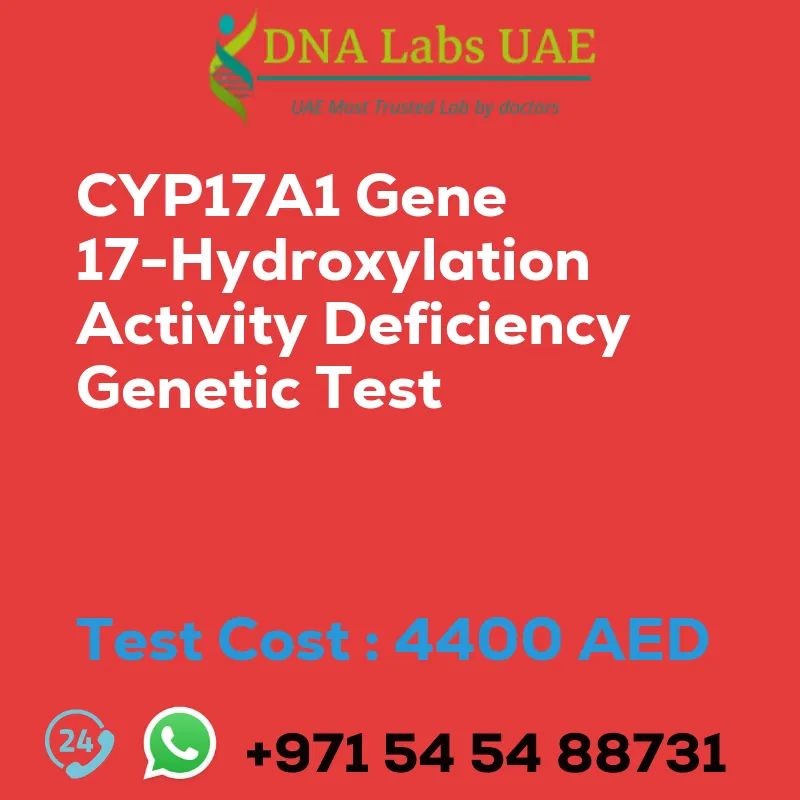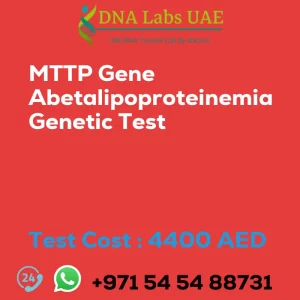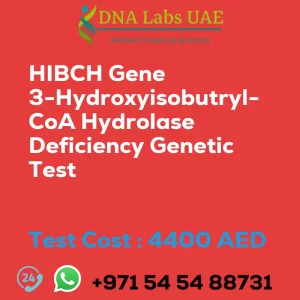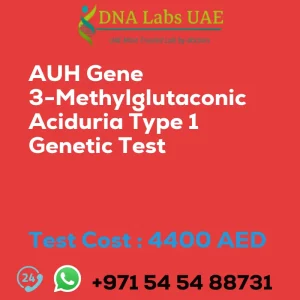CYP17A1 Gene 17-hydroxylation activity deficiency Genetic Test
Components
- Price: 4400.0 AED
- Sample Condition: Blood or Extracted DNA or One drop Blood on FTA Card
- Report Delivery: 3 to 4 Weeks
- Method: NGS Technology
- Test type: Metabolic Disorders
- Doctor: General Physician
- Test Department: Genetics
- Pre Test Information: Clinical History of Patient who is going for CYP17A1 Gene 17-hydroxylation activity deficiency NGS Genetic DNA Test. A Genetic Counselling session to draw a pedigree chart of family members affected with 17-hydroxylation activity deficiency.
Test Details
CYP17A1 gene 17-hydroxylation activity deficiency is a rare genetic disorder that affects the production of certain hormones in the body, including cortisol and sex hormones. This deficiency can lead to a variety of symptoms and health issues, such as abnormal sexual development, infertility, and adrenal insufficiency.
NGS (Next-Generation Sequencing) genetic testing is a type of genetic test that uses advanced sequencing technology to analyze an individual’s DNA. It can identify specific genetic mutations or variations in the CYP17A1 gene that may be responsible for the 17-hydroxylation activity deficiency.
The NGS genetic test for CYP17A1 gene 17-hydroxylation activity deficiency involves collecting a sample of the individual’s DNA, usually through a blood or saliva sample. The DNA is then sequenced using NGS technology to identify any mutations or variations in the CYP17A1 gene.
This genetic test can provide important information about an individual’s risk for developing CYP17A1 gene 17-hydroxylation activity deficiency, as well as help with diagnosis and treatment planning. It can also be used for carrier testing in individuals with a family history of the disorder.
It is important to note that genetic testing for CYP17A1 gene 17-hydroxylation activity deficiency should be performed and interpreted by a qualified healthcare professional or genetic counselor, as the results can have significant implications for an individual’s health and well-being.
| Test Name | CYP17A1 Gene 17-hydroxylation activity deficiency Genetic Test |
|---|---|
| Components | |
| Price | 4400.0 AED |
| Sample Condition | Blood or Extracted DNA or One drop Blood on FTA Card |
| Report Delivery | 3 to 4 Weeks |
| Method | NGS Technology |
| Test type | Metabolic Disorders |
| Doctor | General Physician |
| Test Department: | Genetics |
| Pre Test Information | Clinical History of Patient who is going for CYP17A1 Gene 17-hydroxylation activity deficiency NGS Genetic DNA Test A Genetic Counselling session to draw a pedigree chart of family members affected with 17-hydroxylation activity deficiency |
| Test Details |
CYP17A1 gene 17-hydroxylation activity deficiency is a rare genetic disorder that affects the production of certain hormones in the body, including cortisol and sex hormones. This deficiency can lead to a variety of symptoms and health issues, such as abnormal sexual development, infertility, and adrenal insufficiency. NGS (Next-Generation Sequencing) genetic testing is a type of genetic test that uses advanced sequencing technology to analyze an individual’s DNA. It can identify specific genetic mutations or variations in the CYP17A1 gene that may be responsible for the 17-hydroxylation activity deficiency. The NGS genetic test for CYP17A1 gene 17-hydroxylation activity deficiency involves collecting a sample of the individual’s DNA, usually through a blood or saliva sample. The DNA is then sequenced using NGS technology to identify any mutations or variations in the CYP17A1 gene. This genetic test can provide important information about an individual’s risk for developing CYP17A1 gene 17-hydroxylation activity deficiency, as well as help with diagnosis and treatment planning. It can also be used for carrier testing in individuals with a family history of the disorder. It is important to note that genetic testing for CYP17A1 gene 17-hydroxylation activity deficiency should be performed and interpreted by a qualified healthcare professional or genetic counselor, as the results can have significant implications for an individual’s health and well-being. |








